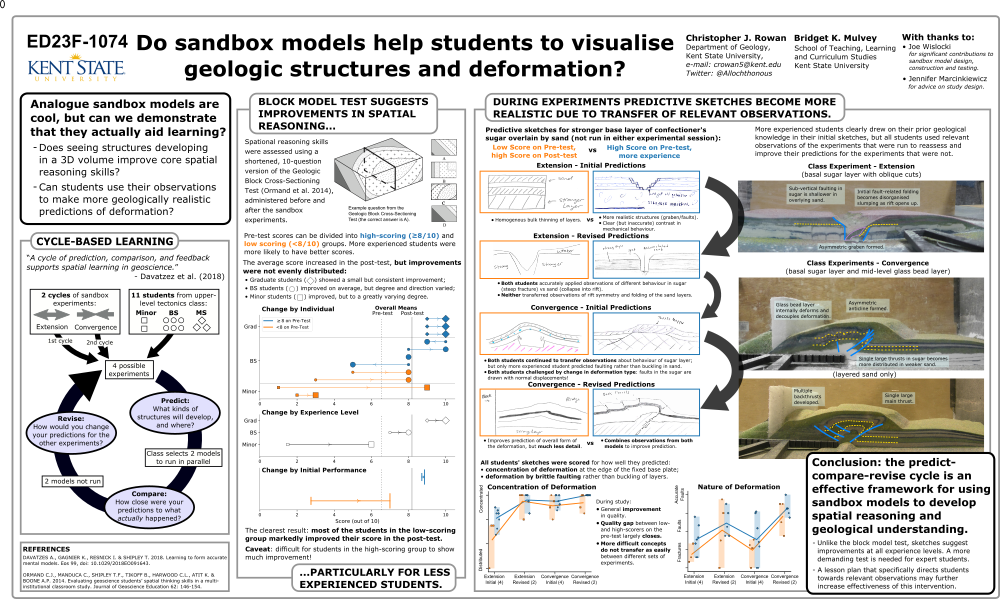AGU 2019 Poster: do analogue sandbox models help students to visualise geologic structures and deformation?
Categories Analogue Modelling, Education Research, Presentations, TeachingFor the first time in a while, I attended the Fall Meeting of the American Geophysical Union, to reveal the results of my first foray into education research:

The motivation for this study was simple. I had used my sandbox model in my Tectonics and Orogeny class before, and although the students had clearly enjoyed running experiments on it, I wasn’t sure how much they had really learned from it about geological structures and how they develop. There had to be a better way, and that better way conveniently fell into my lap courtesy of this article in Eos on cycle-based learning. This inspired me to plan a series of classroom experiments where students predicted the outcome of analogue deformation experiments before they ran them, and used the results of those experiments to revise predictions for models they did not run. With the help of Bridget Mulvey from Kent State’s School of Teaching, Learning and Curriculum Studies, data was collected before, during and after the study to see if we could observe any improvement in spatial reasoning or geological understanding. Happily, it seems we can!
I had a lot of fun discussing this research with the people who stopped by my poster, and we hope to submit a paper describing this research in more detail in the near future.
The animation below is made from photos taken from the convergent experiments which we ran as part of the study. The top two were run in class, the second two were run out of class and were shown to the students only after they had submitted revised predictions.
